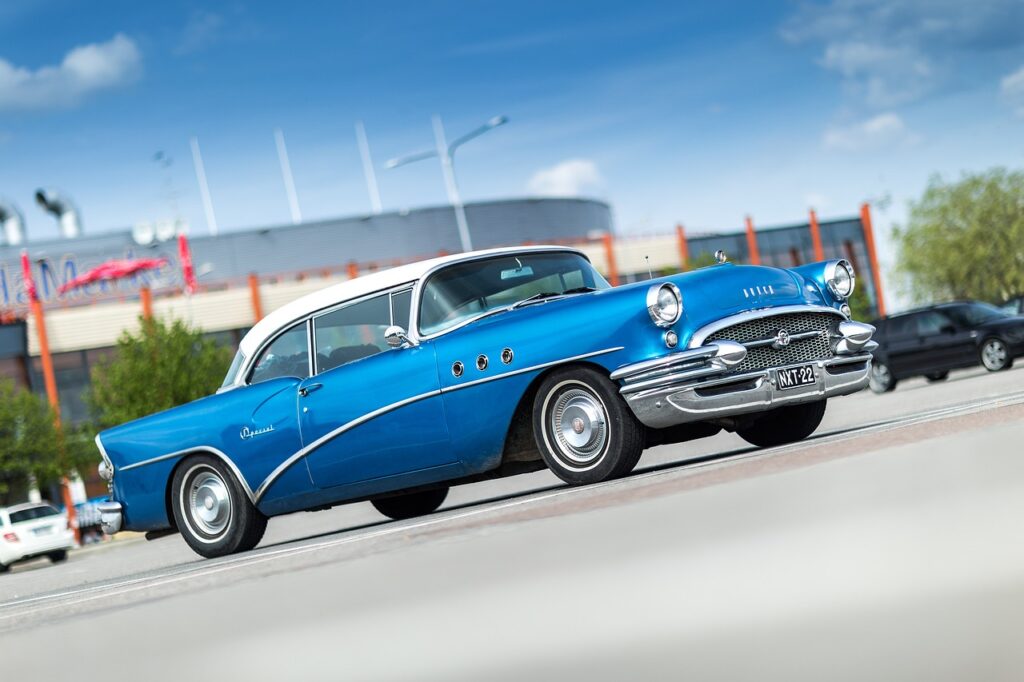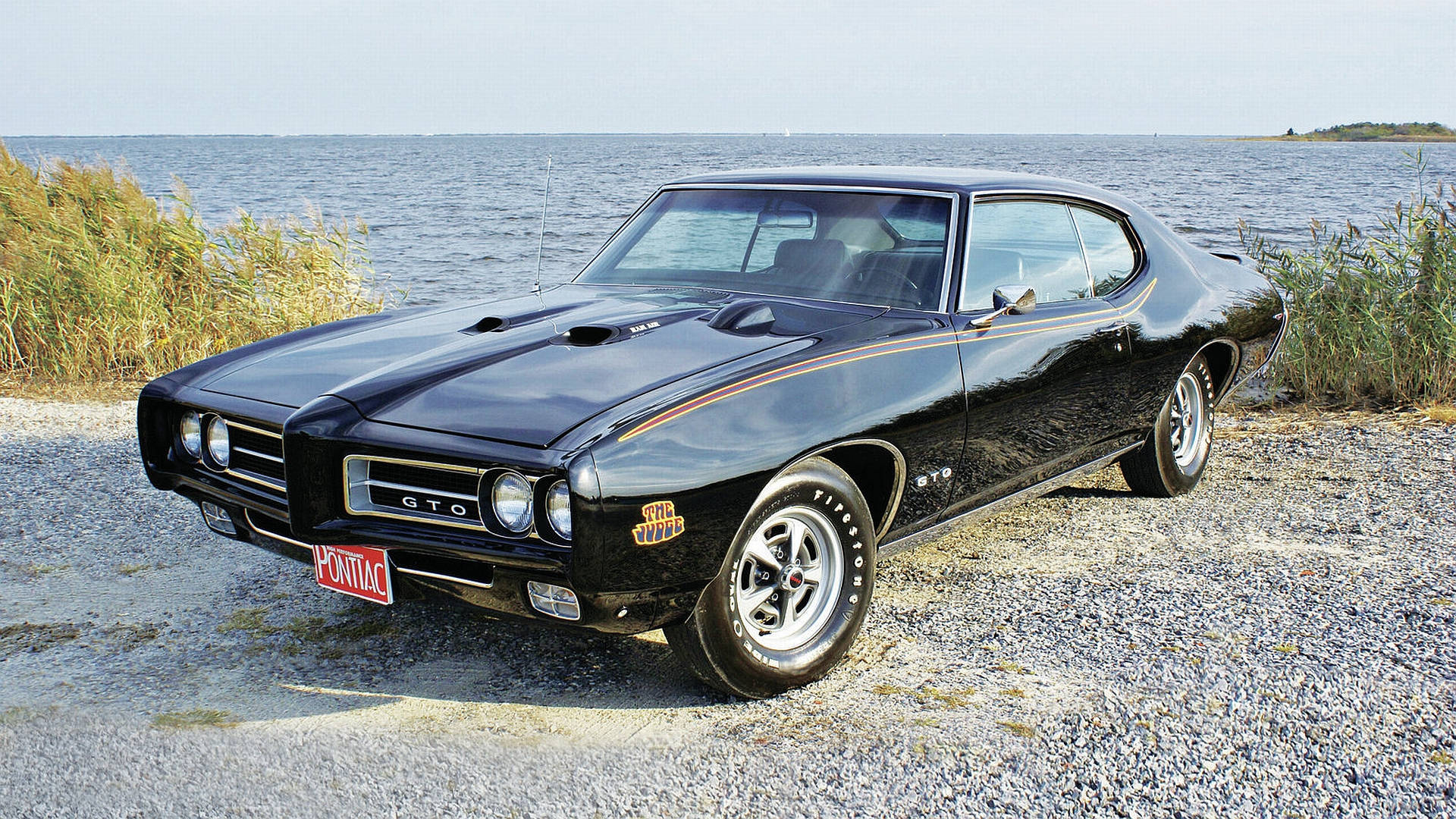The allure of Hollywood memorabilia has always held a special place in the hearts of film enthusiasts and collectors alike. These aren’t merely dusty props or discarded costumes; they are tangible fragments of cinematic history, imbued with the magic of the silver screen and the legacies of the stars who brought them to life. From the moment they appear on screen, these items transition from simple tools of production to powerful symbols, etching themselves into our collective memory.
For decades, the pursuit of these iconic artifacts remained a niche hobby, primarily driven by passionate fans. However, a pivotal shift occurred in 1970 when Metro-Goldwyn-Mayer famously liquidated its vast inventory, selling off over 300,000 costumes, countless vehicles, entire sets, and a treasure trove of other production assets. This event, which some historians mark as the end of Hollywood’s golden age, fundamentally changed the market, transforming collecting into a significant investment opportunity where prices began to spiral upwards, attracting major auction houses like Christie’s, Sotheby’s, and Bonhams.
Today, the value these pieces command is nothing short of astronomical, reflecting not just their scarcity but their profound cultural impact. We’re about to embark on an enthralling journey, counting down some of the most expensive movie props ever sold. These are the items that have transcended their on-screen appearances to become legendary, fetching unbelievable fortunes and cementing their place as irreplaceable pieces of cinematic heritage.

1. Marilyn Monroe’s White Dress from The Seven Year Itch
Few movie scenes are as instantly recognizable or as deeply ingrained in pop culture as Marilyn Monroe’s white dress billowing over a New York City subway grate. This iconic image, from the 1955 film *The Seven Year Itch*, didn’t just define a moment; it defined an era of Hollywood glamour and cemented Monroe’s status as a timeless symbol. The dress itself became an enduring symbol, famously reenacted by fans all over the globe, a testament to its unparalleled cultural resonance.
Designed by the brilliant William Travilla, the dress was far more than just a costume; it was a character in itself, perfectly capturing the playful allure and effortless charm that Marilyn Monroe embodied. Its cultural influence was immediate and long-lasting, solidifying the image of the alluring, carefree blonde that would forever be associated with the actress. This single garment, through one unforgettable scene, etched itself into the annals of both fashion and film history.
In 2011, this remarkable piece of cinematic history went up for auction and fetched a staggering $4.6 million, more than doubling Profile in History’s $2 million pre-sale estimate. Its owner, the legendary actress Debbie Reynolds, had acquired over 3,000 pieces of Hollywood memorabilia over decades, with the dream of opening a museum. Facing debt, Reynolds reluctantly sold off her cherished collection, including this ultimate symbol of cinema’s golden age, making it the most expensive film prop sold at that time.
Read more about: Marilyn Monroe: A Reassessment of a Life Defined by Stardom, Struggle, and Enduring Iconography
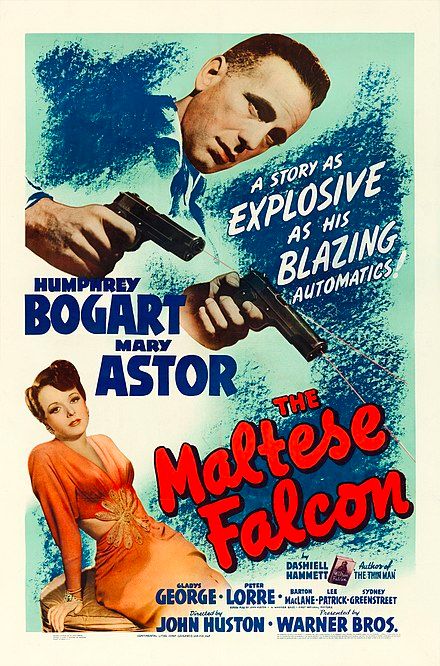
2. The Maltese Falcon from The Maltese Falcon
Stepping into the shadowy world of film noir, we encounter a prop shrouded in as much mystery and intrigue as the classic film it represents: the Maltese Falcon statuette. This iconic black bird, the elusive macguffin at the core of the 1941 Humphrey Bogart classic of the same name, is considered an instant “Holy Grail piece” for serious collectors. It embodies the very essence of mystery and the quest for the ultimate prize, captivating audiences for generations.
As far as anyone knows, only one Maltese Falcon statue was used for the Humphrey Bogart classic, though two were made, making its scarcity contribute immensely to its legendary status. The physical prop itself is a substantial piece, standing 12-inches tall and weighing a solid 45 pounds. When Bonhams and Turner Classic Movies teamed up for a major auction in 2013, they didn’t even bother to provide an estimate for this unparalleled artifact, understanding its unique value.
The statuette ultimately sold for an astonishing $4,085,000, plus a $585,000 buyer’s premium, making its total close to $4.67 million. The winner initially remained unidentified, adding another layer of intrigue to the bird’s already mysterious lore. It was later revealed to be billionaire Las Vegas hotelier Steve Wynn, a testament to the immense value collectors place on symbols of cinematic history, especially one so deeply intertwined with the “stuff that dreams are made of.”
Read more about: Cinema’s Unsung Survivors: A Vulture-Eyed Dive into the Most ‘Useless’ Movie Props and Their Legendary Afterlives
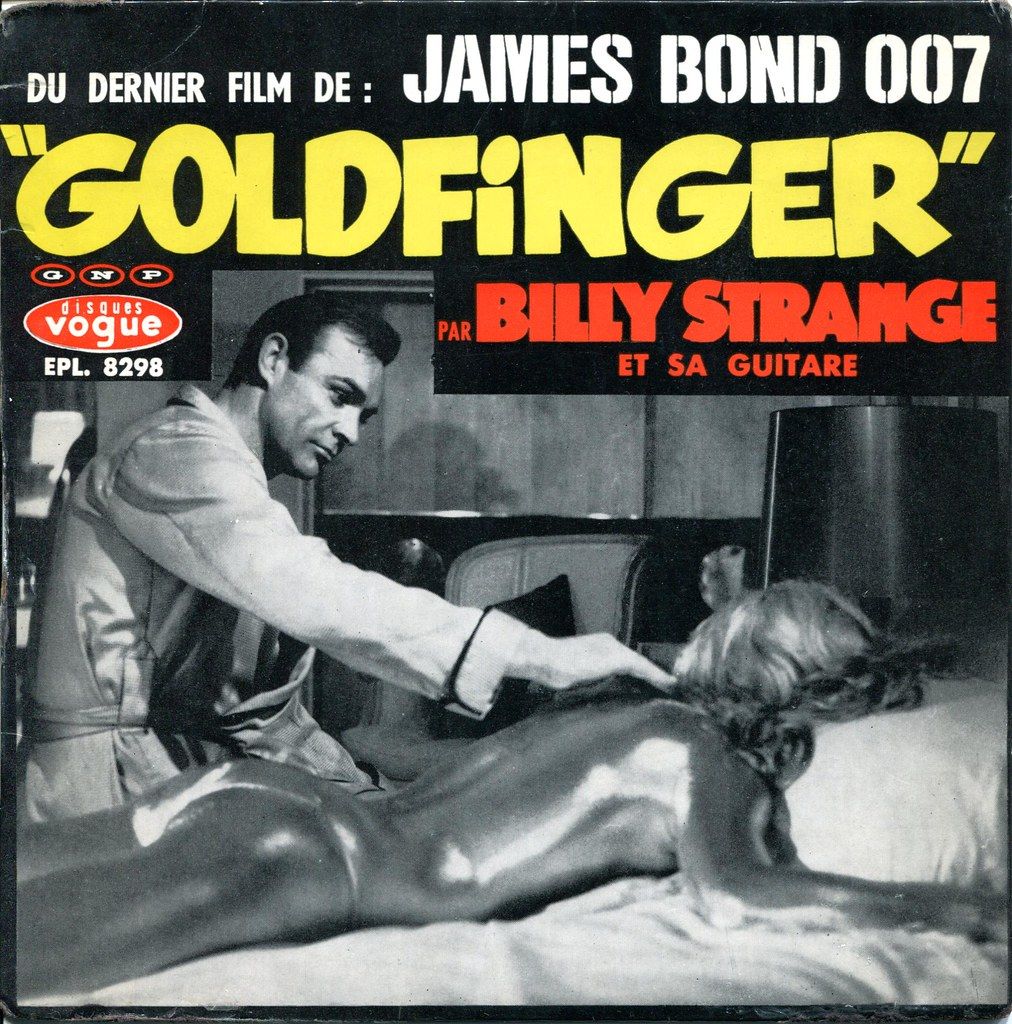
3. James Bond’s Aston Martin DB5 from Goldfinger and Thunderball
When it comes to iconic vehicles in cinema, few can rival the sleek sophistication of James Bond’s Aston Martin DB5. This magnificent car, appearing prominently in films like *Goldfinger* and *Thunderball*, didn’t just transport the suave secret agent; it cemented his image as the ultimate espionage hero. The DB5 became synonymous with Bond’s style, his taste for the finest gadgets, and his ability to navigate any perilous situation with effortless cool.
What truly elevated this particular vehicle beyond a mere car was its suite of unique modifications, making it a veritable mobile arsenal for Her Majesty’s Secret Service. Equipped with machine guns, an ejector seat, and other ingenious spy gadgets, the DB5 was a marvel of cinematic engineering, captivating audiences with its blend of elegance and lethal capability. Its presence in these seminal Bond films transformed it into a character in its own right, a silent partner in danger.
This restored 1965 Aston Martin DB5, replete with all its legendary spy modifications, sold for an incredible $6.4 million in 2019. Its astronomical price tag reflects the enduring appeal of the Bond franchise and the aspirational allure of driving one of the most famous cars in cinematic history. For fans, owning this vehicle is not just about possessing a prop; it’s about owning a piece of the Bond legend, a dream collectible representing the epitome of espionage chic.
Car Model Information: 2023 Ford Mustang EcoBoost Premium
Name: Aston Martin DB5
Manufacturer: Aston Martin
Production: 1963–1965 (1,059 units),2020 (25 units)
Assembly: Newport Pagnell,England
Designer: Carrozzeria Touring Superleggera
Class: Grand tourer
BodyStyle: coupé
Layout: Front-engine, rear-wheel-drive layout
Engine: DOHC,Straight-6,3995 cc
Order: flip
Abbr: on
Powerout: convert
Transmission: ZF Friedrichshafen
Length: 4570 mm
Width: 1680 mm
Wheelbase: 98.0 in
Predecessor: Aston Martin DB4
Successor: Aston Martin DB6
Doors: 2
Weight: 3311 lb
Sp: uk
Categories: All Wikipedia articles written in British English, Articles with short description, Aston Martin vehicles, CS1: unfit URL, Cars discontinued in 1965
Summary: The Aston Martin DB5 is a British grand tourer (GT) produced by Aston Martin and designed by Italian coachbuilder Carrozzeria Touring Superleggera. Originally produced from 1963 to 1965, the DB5 was an evolution of the final series of DB4. The “DB” designation is from the initials of David Brown who built up the company from 1947 onwards.
The DB5 is best-known for its role in the James Bond films. It was first driven by the fictional spy in the film Goldfinger (1964). In 2013, the car featured on a “British Auto Legends” postage stamp issued by the Royal Mail.
Get more information about: Aston Martin DB5
Buying a high-performing used car >>>
Brand: ASTON MARTIN Model: DB5
Price: $25,175 Mileage: 58,832 mi.
Read more about: Dr. No Uncovered: 12 Electrifying Behind-the-Scenes Moments from the First 007 Film

4. Robby the Robot from Forbidden Planet
Venturing into the realm of science fiction, we encounter a pioneering figure that redefined cinematic robots: Robby the Robot from the 1956 influential sci-fi classic, *Forbidden Planet*. This remarkable automaton was, in 2017, the highest price ever paid for a movie prop, underscoring its immense historical significance and groundbreaking design. Robby wasn’t just a prop; he was a character, a symbol of futuristic possibilities and the burgeoning era of cinematic special effects.
Standing at an impressive 7-feet tall, Robby the Robot was a marvel of design for its time. He was meticulously crafted by MGM’s Robert Kinoa, Arnold Gillespie, Irving Block, Mentor Huebner, and Arthur Lonergan. The sheer effort and expense involved in his creation were substantial, costing a whopping $100,000-$125,000 to build. This was a sizable chunk of the film’s total $1.97 million budget, highlighting the studio’s commitment to making him a standout feature.
The final cost to the anonymous buyer was an astounding $4.6 million, plus a hefty buyer’s premium, bringing the total to $5.375 million paid to Bonhams. Robby was actually part of a larger *Forbidden Planet* auction lot, which included an auxiliary control panel and the original MGM packing crates, along with Robby’s awesome Jeep. This comprehensive package ensured that the new owner received not just a prop, but a complete slice of science fiction film history, preserving its legacy for future generations.
Read more about: Mind-Bending Masterpieces: The Sci-Fi Films That Absolutely Revolutionized Cinema and Blew Our Minds
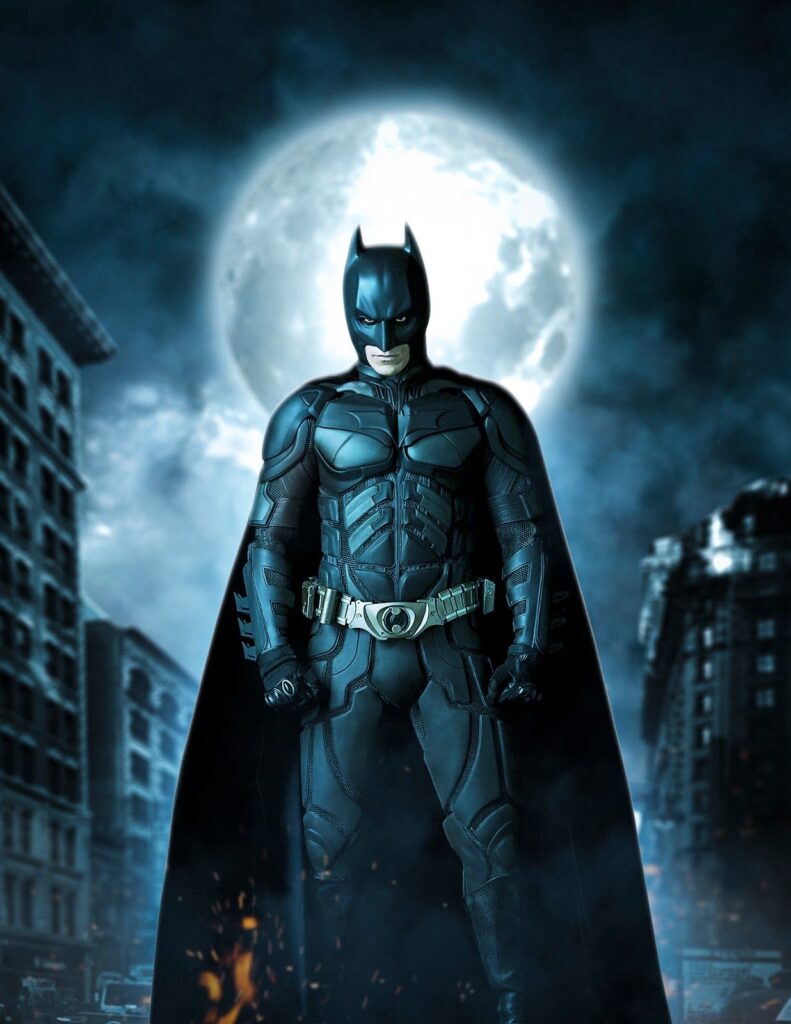
5. The Batmobile from Batman (1966)
From the shadowy alleys of Gotham City emerged a vehicle that became an instant icon for an entire generation: the original Batmobile from the 1966 ABC *Batman* TV series and film. This distinctive crime-fighting machine wasn’t just a means of transport for the Caped Crusader; it was a potent symbol of justice and ingenuity, captivating fans with its outrageous design and ingenious features. Its presence on screen was as commanding as Batman himself, making it a beloved piece of pop culture.
Designed by the acclaimed Hollywood car customizer George Barris, the Batmobile was a masterpiece of customization, transforming a Ford Futura concept car into a gothic, rocket-powered marvel. Its unique features, meticulously integrated for fighting crime, included a rocket booster for quick escapes, a Batphone for direct communication with Commissioner Gordon, and an oil squirter to thwart pursuing villains. These gadgets were not just props; they were extensions of Batman’s methodical approach to fighting crime.
In 2013, this original Batmobile sold for a staggering $4.6 million at auction, reflecting its unparalleled status as a pop culture phenomenon. Its sale underscored the deep nostalgic connection audiences felt for the vibrant, campy aesthetic of the 1960s Batman era. The Batmobile remains an enduring symbol of superhero legacy, proving that sometimes, the vehicle can be just as famous, if not more so, than the hero behind the wheel.
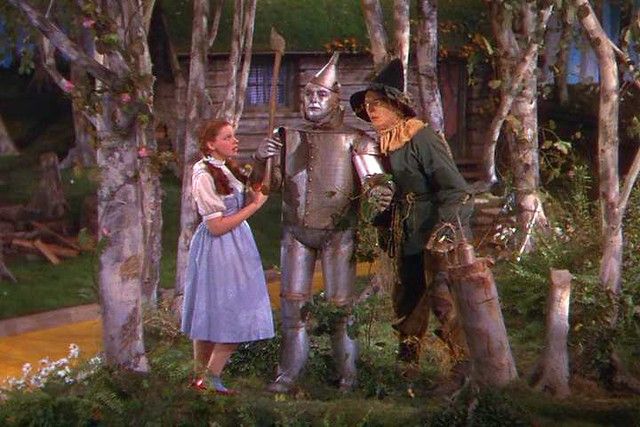
6. The Cowardly Lion Costume from The Wizard of Oz
Few characters from cinematic history are as endearing and memorable as Bert Lahr’s Cowardly Lion in *The Wizard of Oz*. His portrayal brought both humor and pathos to the screen, and his costume became an intrinsic part of his beloved persona. This iconic garment, central to one of the most acclaimed films in cinematic history, sold for an incredible auction price of $3,070,000 in November 2014, reaffirming its profound cultural and historical significance.
A fascinating, albeit somewhat unsettling, fact about this legendary costume is its construction: it was crafted from actual lion skin and fur. The detailed craftsmanship extended to optical glass eyes and an “Italian human hair wig and mane,” creating an incredibly lifelike and formidable appearance. While such materials would “understandably not be allowed today,” they speak to the production values of the era and the lengths taken to bring the fantastical world of Oz to life.
The Cowardly Lion’s costume is more than just a piece of clothing; it’s a powerful symbol of courage and friendship, reminding us that even the meekest among us can find our inner bravery. Bonhams sold the costume at an auction in New York City on behalf of its owner, James Comisar, an avid film and television memorabilia collector and preservationist. Its sale was a “roaring success,” securing its place among the most valuable and historically resonant movie props.
Read more about: Were the Editors Asleep? 12 Jaw-Dropping Film Fails That Sneaked Onto the Big Screen, From Ancient Rome to a Galaxy Far, Far Away!

7. X-Wing Model from Star Wars
From a galaxy far, far away, emerged one of the most recognizable spacecraft in cinematic history: the X-Wing starfighter model from the first *Star Wars* movie. This distinctive and unique spacecraft, an emblem of the Rebel Alliance’s struggle against the Empire, became an instant icon for generations of science fiction fans. Its sleek design and pivotal role in the destruction of the Death Star etched it deeply into the collective imagination, symbolizing hope and rebellion.
This long-missing X-Wing model was found in a box in the garage of Oscar- and Emmy-nominated model designer Greg Jein, who sadly passed away in 2022. Jein was renowned for his extensive work in science fiction, including a long association with *Star Trek*. His personal collection, which included items he created and pieces he purchased, was sold off in two auctions in October 2023, revealing this hidden treasure to the world.
The X-Wing starfighter model ultimately sold for a remarkable $3.1 million, a testament to the enduring appeal and monumental impact of the *Star Wars* franchise. Its sale highlights not only the value placed on props from landmark sci-fi epics but also the legacy of the artisans like Jein who brought these fantastical worlds to life. This piece of cinematic hardware represents a critical turning point in film history, an artifact from a movie that changed special effects forever.
Continuing our exploration into the extraordinary value of film artifacts, we delve into eight more unparalleled props, examining their unique origins, immense cultural impact, and the astronomical prices they commanded at auction, concluding with reflections on Hollywood’s enduring allure.
Read more about: Remembering the Magic: 14 ‘NeverEnding Story’ Actors You Might Not Know Have Passed Away

8. Audrey Hepburn’s My Fair Lady Ascot Dress
Audrey Hepburn’s indelible mark on cinematic fashion extends far beyond her iconic little black dress. Her exquisite Ascot dress and hat from the 1964 classic *My Fair Lady* represent another pinnacle of costume design history. This unforgettable ensemble was meticulously crafted by the legendary Cecil Beaton, whose visionary work on the film rightfully earned him an Oscar for Best Color Costume Design, cementing his legacy in cinematic fashion.
This magnificent dress made its famous debut in the scene where Eliza Doolittle attends the prestigious Ascot Derby. It was a pivotal moment that perfectly encapsulated her dramatic transformation from a Cockney flower seller into a sophisticated lady of high society. The film itself was a monumental triumph, garnering an impressive eight Academy Awards, including the coveted Best Picture, a testament to its artistic and commercial success.
Such a remarkable costume had a truly fascinating journey through the hands of Hollywood’s most dedicated collectors. The esteemed actress Debbie Reynolds, a fervent preserver of cinematic history and an avid collector, acquired this very dress for a sum of $100,000. Her dream was to open a museum dedicated to these cherished artifacts, ensuring their preservation for future generations.
Decades later, in 2011, facing significant debt, Reynolds made the difficult and heartfelt decision to auction off her cherished collection, including this magnificent piece. Her investment proved incredibly astute, as the outfit sold for an astonishing $3.7 million. This represented an astounding 37-fold return on her original purchase price, vividly showcasing the immense and appreciating value of such a significant piece of film history and Hepburn’s enduring status as a style icon.
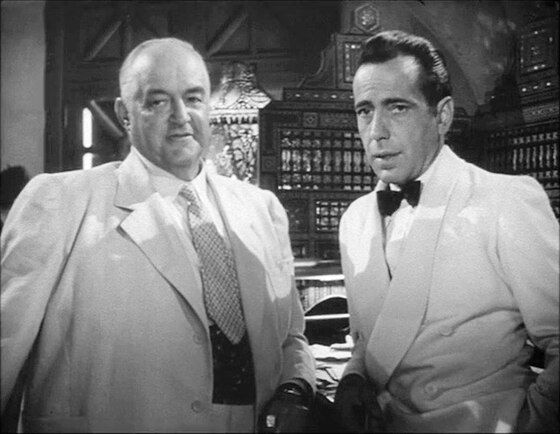
9. Sam’s Piano from *Casablanca*
Few movie moments resonate with the emotional depth and romantic melancholy of Sam playing “As Time Goes By” in *Casablanca*. The upright miniature piano, prominently featured in Rick’s Café Américain, became far more than a mere prop; it was a silent witness to an epic love story and a poignant symbol of lost romance and unwavering hope. Dooley Wilson’s soulful performance as Sam, accompanied by this very instrument, etched itself into the hearts of audiences worldwide.
This piano’s humble appearance belies its profound narrative significance within the film. It represents the shared history and tender memories between Rick Blaine and Ilsa Lund, serving as a tangible link to their fleeting happiness in Paris before the encroaching shadows of war engulfed Europe. The melody, eternally linked to their past, evokes a powerful sense of nostalgia and the impossible choices faced by the characters in a time of global turmoil.
In 2014, this deeply symbolic piece of cinematic heritage went under the hammer at a Bonhams auction in New York, drawing considerable attention from collectors globally. The sale offered a truly unique opportunity for enthusiasts to own a piece of a film consistently ranked among the greatest of all time. The piano itself, with its unassuming charm, held a weight of emotional history that few other props could rival.
The piano ultimately sold for an eye-popping $3.4 million, confirming its status as an unparalleled artifact of Hollywood’s Golden Age. The successful bidder also received a signed picture of Dooley Wilson, adding to the historical provenance and collector’s appeal. While Rick’s iconic letters of transit, which sold separately for $118,750, were not included, the piano’s sale underscored the enduring power of *Casablanca*’s story and its ability to command astronomical prices for its key artifacts.

10. R2-D2 Unit from the *Star Wars* Franchise
From the sprawling deserts of Tatooine to the icy landscapes of Hoth, the loyal astromech droid R2-D2 has been a constant, beloved presence throughout the original *Star Wars* saga. This iconic 43-inch tall unit, assembled from parts used across the original trilogy, became one of the most recognizable and endearing characters in science fiction history, communicating through a series of expressive beeps and whistles that conveyed a surprising depth of emotion.
R2-D2’s importance transcends mere comic relief or clever gadgetry; he is a crucial protagonist, often saving the heroes from seemingly insurmountable odds and acting as a steadfast companion. His unique design and pivotal role in delivering vital information, carrying critical blueprints, and even piloting starfighters, cemented his status as a true legend of cinema. The droid embodies ingenuity, steadfast loyalty, and silent bravery, resonating deeply with fans of all ages.
The allure of possessing such a foundational piece of a globally beloved franchise drove immense interest when this particular R2-D2 unit came up for auction in 2017. While the exact combination of parts used in each specific film can be complex to pinpoint with absolute certainty, the fact that it incorporated authentic components from across the original trilogy significantly elevated its historical and sentimental value for collectors.
Profiles in History, a prominent auction house specializing in high-profile Hollywood memorabilia, successfully facilitated the sale of this extraordinary artifact. The full-sized R2-D2 droid fetched a staggering $2.76 million. This steep price tag is a powerful testament to the monumental impact of the *Star Wars* series and the deep nostalgia fans feel for its original, groundbreaking characters and creations, solidifying its place among cinema’s most valuable relics.

11. Dorothy’s Ruby Slippers from *The Wizard of Oz*
“There’s no place like home,” a sentiment perfectly encapsulated by Dorothy Gale’s magical ruby slippers in *The Wizard of Oz*. These dazzling red shoes are far more than mere footwear; they are a potent symbol of hope, inner strength, and the journey back to what truly matters. Judy Garland, as Dorothy, clicked them together three times, and a cinematic legend was born, forever cementing their place in cultural iconography as a beacon of dreams and possibilities.
The meticulous craftsmanship behind these iconic shoes involved several skilled individuals and entities, including costume designer Adrian and the Innes Shoe Company. Due to the rigorous demands of filming and the need for backup props, at least four distinct sets of ruby slippers were painstakingly created for Garland to wear during the production of the beloved 1939 musical. Each pair contributed significantly to the film’s vibrant visual storytelling and enduring magic.
Over the years, various pairs of these cherished slippers have appeared at auction, consistently commanding astronomical sums from fervent collectors. The profound emotional connection audiences feel to *The Wizard of Oz*, combined with the slippers’ pivotal role in the narrative, makes them highly sought-after artifacts. They represent a tangible link to a film that defined a generation and continues to enchant new ones with its timeless message.
In 2012, a particularly significant pair, purportedly worn by Garland and featured in the immortal heel-clicking sequence, came up for sale, generating immense public interest. In a remarkable act of cinematic preservation, filmmaking luminaries Steven Spielberg and Leonardo DiCaprio teamed up to acquire them. They then graciously donated the shoes to the Academy Museum of Motion Pictures in Los Angeles, ensuring they are available for all to see, a shining beacon of film history. This pair sold for $2 million, showcasing the enduring magic and value of these cinematic treasures.
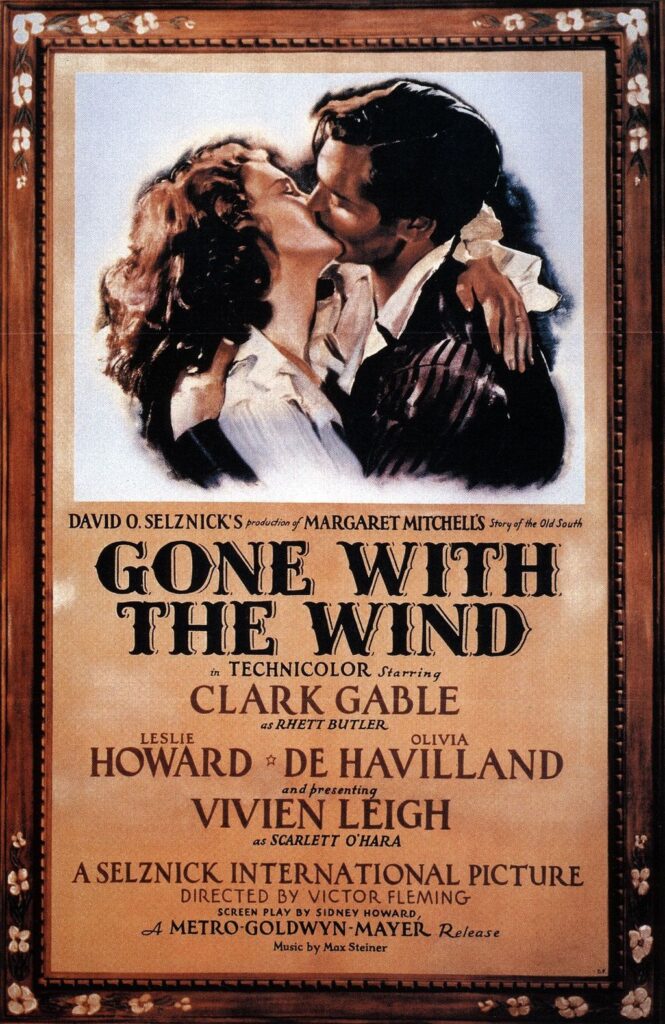
12. David O. Selznick’s *Gone With The Wind* Best Picture Oscar
While modern Academy Award winners face strict rules preventing the sale of their golden statuettes, such restrictions were notably not in place for earlier recipients. This historical loophole allowed for a truly unique piece of Hollywood legacy to enter the auction market: producer David O. Selznick’s Best Picture Oscar for the monumental 1939 epic, *Gone with the Wind*. The film, a sprawling saga of love and war, remains one of the most celebrated achievements in cinema history.
*Gone with the Wind* was not just a commercial success; it was a cultural phenomenon upon its release, earning a then-unprecedented ten Academy Awards, solidifying its place as a groundbreaking achievement. Selznick’s Oscar symbolizes the pinnacle of this achievement, representing the creative vision and immense effort that brought the sweeping story of Scarlett O’Hara and Rhett Butler to the screen. To own such an award is to possess a tangible piece of cinematic triumph from Hollywood’s golden age.
When this coveted statuette went up for auction through Sotheby’s in 1999, it ignited a fierce bidding frenzy among collectors. Originally estimated to sell for $300,000, its final sale price soared to nearly four times that amount, far exceeding expectations. The buyer was none other than the legendary “King of Pop” and noted movie aficionado, Michael Jackson, whose personal collection was famously eclectic and extensive, showcasing his deep appreciation for cultural artifacts.
However, the story of Selznick’s Oscar took a bizarre and perplexing turn after Jackson’s untimely death in 2009. When the executors of his estate conducted a thorough accounting of his belongings and assets, the Oscar was inexplicably missing, its whereabouts unknown. To this day, its location remains a tantalizing mystery, adding a layer of enduring intrigue to an already iconic piece of film history. The award sold for a remarkable $1.54 million, highlighting its profound historical significance.

13. Julie Andrews’ Costumes and Memorabilia from *The Sound of Music*
The hills were truly alive with the sound of music, and few films evoke such warmth, joy, and timeless charm as Robert Wise’s 1965 classic musical. The enduring appeal of *The Sound of Music* extends beyond its beloved songs and heartwarming story to its tangible artifacts, which serve as direct links to its magic. In 2013, Profiles in History offered a comprehensive package featuring several iconic items from the film, allowing devoted fans to own a piece of this cinematic treasure.
This “hodge-podge lot,” as it was described, was a veritable dream for any fan, including some of the most memorable costumes worn by the film’s radiant leading lady, Julie Andrews. Among the undisputed highlights was the very dress Andrews wore while performing the unforgettable “Do-Re-Mi” sequence with the Von Trapp children, a scene etched into global memory. Also included were the vibrant yellow skirt and blouse from Maria’s return from her honeymoon, and a distinctive purple wool cape also donned by Andrews.
The collection thoughtfully extended beyond Maria’s wardrobe to include pieces associated with the Von Trapp children, further enriching its historical and nostalgic value. Kurt’s “So Long, Farewell” jacket, a poignant item from one of the film’s most charming musical numbers, was an integral part of the lot. Additionally, seven of the Von Trapp kids’ school uniforms and a four-page Von Trapp family history, personally signed by the real Maria Von Trapp, completed this extraordinary offering, providing a comprehensive historical snapshot.
The auction was a resounding success, with the entire collection selling for an impressive $1.3 million. This significant price powerfully reflects the deep cultural impact of *The Sound of Music* and its unwavering status as a beloved family favorite across generations. It also underscores the dedication of collectors to preserve and cherish these tangible links to beloved cinematic narratives, capturing the essence of a film that continues to inspire and uplift audiences worldwide.

14. The Iconic Dance Floor from *Saturday Night Fever*
The pulsating lights and electric atmosphere of the 2001 Odyssey nightclub in Bay Ridge, Brooklyn, became a cultural touchstone with the release of *Saturday Night Fever*. John Travolta, as Tony Manero, captivated audiences with his inimitable disco moves, launching a sensation that defined an entire era of music, fashion, and dance. Central to these iconic scenes was the flashing dance floor itself, a vibrant character imbued with the unbridled energy of disco.
Director John Badham, inspired by a similar illuminated floor he encountered at a supper club in Birmingham, Alabama, brilliantly brought this vision to life on screen. The dance floor, which flashed brilliant blue, yellow, and red in sync with the hit songs, was an essential element in setting the film’s vibrant and dynamic tone. Travolta’s insistence that his dance scenes be shot in full-length widescreen inadvertently elevated the floor to a starring role, making it instantly recognizable and deeply memorable.
In 2005, a tangible piece of this legendary floor found a new home when Vito Bruno, who once worked as a bouncer at the very 2001 Odyssey, purchased it at auction for a modest $6,000. It was a tangible connection to his past and a significant piece of music and film history, capturing the essence of disco’s heyday. The floor, a powerful symbol of an era, continued its journey, reflecting the enduring nostalgia for the 1970s and its unique cultural phenomena.
Twelve years later, in 2017, Bruno decided to put the dance floor up for auction again, this time through the esteemed Profiles in History. An anonymous bidder, clearly recognizing its profound cultural significance and the iconic status it held in popular culture, purchased it for more than $1 million. This sale underscored the extraordinary value placed on items that not only played a pivotal part in a film but also deeply influenced, and continue to influence, popular culture.
Read more about: Beyond the Script: Unpacking the Improvised Brilliance of ‘Pulp Fiction’s’ Legendary Dance-Off

15. Darth Vader’s Helmet and Mask from *The Empire Strikes Back*
Few villains in cinematic history command as much awe and fear as Darth Vader, the imposing figure at the heart of the *Star Wars* saga. His distinctive, menacing helmet and mask became an instant icon, symbolizing the dark side of the Force and the galactic Empire’s oppressive power. This fiberglass mask and helmet, famously sported by actor David Prowse while portraying the villainous Sith Lord in *The Empire Strikes Back*, stands as a true “Holy Grail of science fiction artifacts.”
Designed by the brilliant Ralph McQuarrie, Vader’s ensemble was more than just a costume; it was a carefully constructed persona that amplified his menacing presence to an almost supernatural degree. The helmet’s stark blackness, combined with the chilling, mechanical sound of his respirator, created an unforgettable antagonist. It represented the ultimate embodiment of evil, making every appearance a moment of palpable tension for audiences worldwide, instantly recognizable and deeply feared.
When this pivotal piece of *Star Wars* history went up for auction in 2019, it generated immense excitement among collectors and fans across the globe. Profiles in History, known for handling high-profile memorabilia, initially estimated a sale range of $250,000-$450,000. However, the true market value of such an irreplaceable artifact quickly surpassed expectations, reflecting its profound cultural and historical significance far beyond initial projections.
The final price, a substantial increase from its initial estimate, soared to $898,000, with a buyer’s premium bringing the total to an impressive $1.1 million. The anonymous buyer, undoubtedly a dedicated *Star Wars* enthusiast and a true believer in the Force, demonstrated the lengths to which collectors will go to acquire a piece of their cherished cinematic universe. This sale underscored the enduring power of the Dark Side’s most formidable symbol.
The listing for this iconic artifact also included Vader’s shoulder armor, which was worn by Prowse during filming, further enhancing its value and completeness as a collector’s item. Such a comprehensive package ensured that the new owner received not just a prop, but a substantial and historically rich piece of one of the greatest film franchises ever created, solidifying its place in cinematic lore.
These remarkable sales not only highlight the incredible craftsmanship and iconic status of these movie props but also reflect a deeper truth about our profound connection to cinema. They are not merely objects; they are vessels of storytelling, imbued with the emotions, memories, and magic of the silver screen. Each prop carries a narrative far beyond its physical form, representing moments that have shaped our cultural landscape and captivated imaginations across generations. From the whimsical to the terrifying, these artifacts continue to prove that the allure of Hollywood is a powerful, enduring force, capable of inspiring millions and commanding fortunes.


